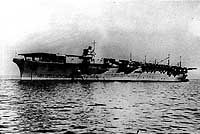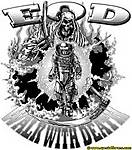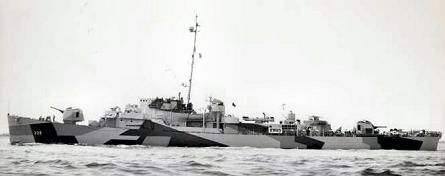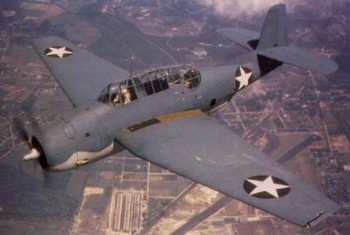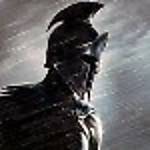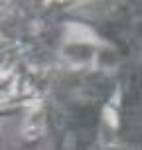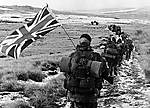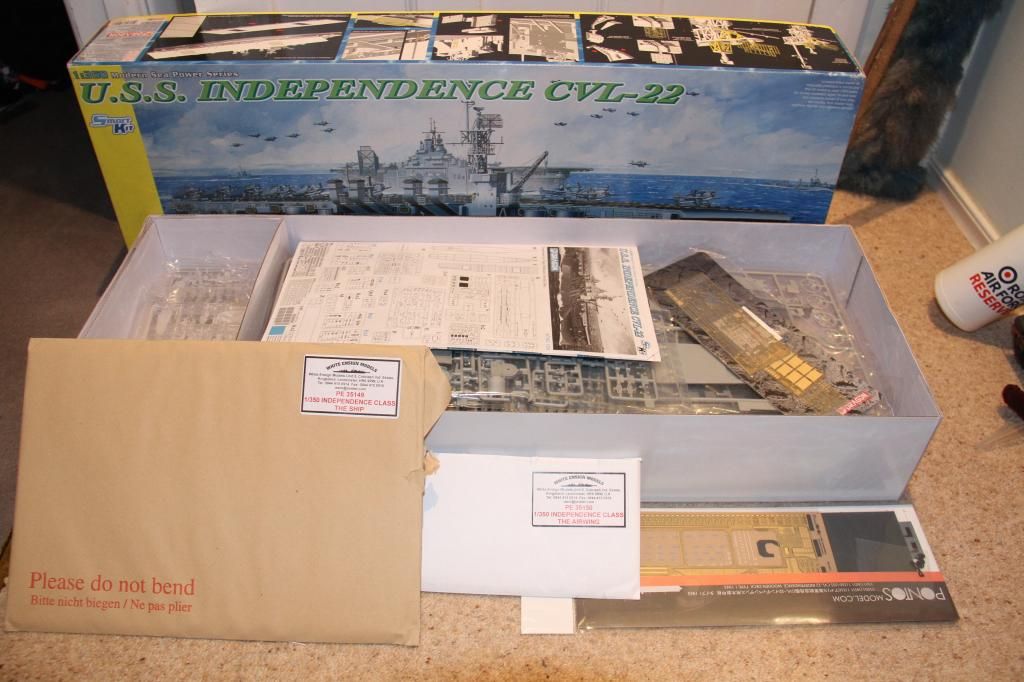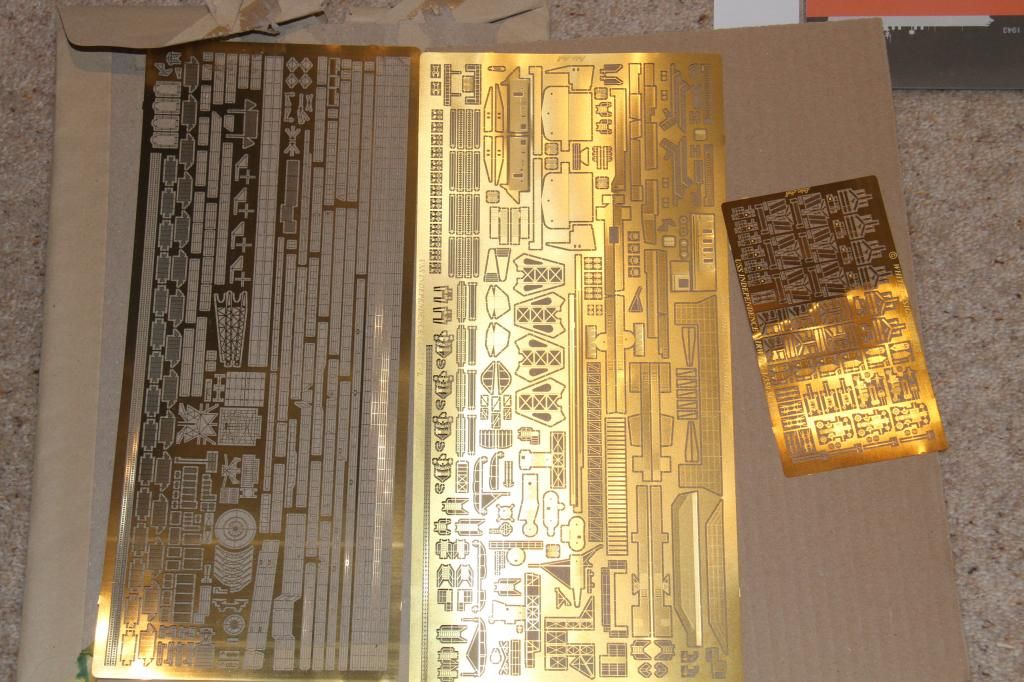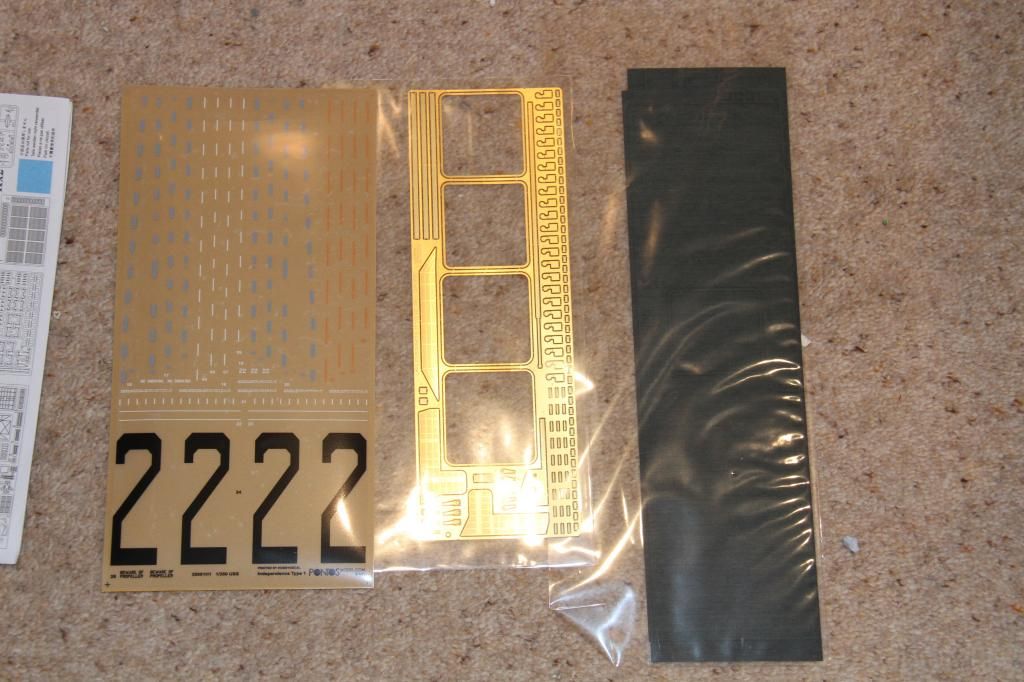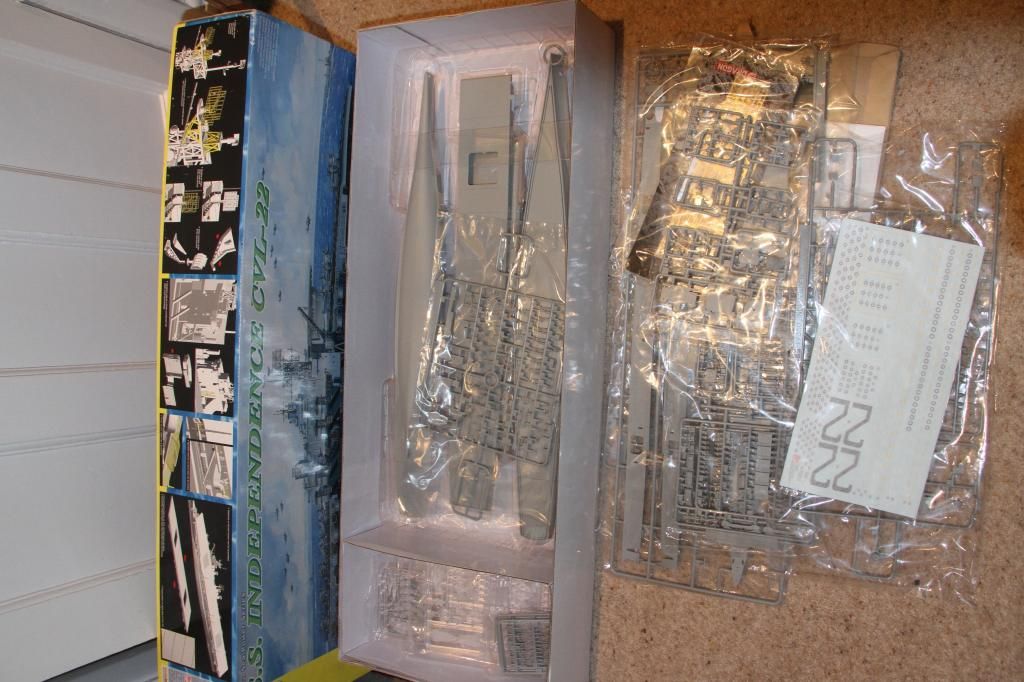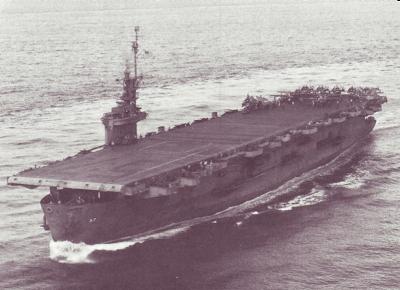
Gambier Bay
A bay in the coast of Alaska.
(CVE-73: dp. 7,800; l. 512'3"; b. 65'; t. 108'1"; dr. 22'6" ; s. 19 k.; cpl. 860; a. 1 5", 16 40mm.; cl. Casablanca)
Gambier Bay, originally classified AVG-73, was reclassified ACV-73 on 20 August 1942 and again reclassified OVE-73 on 15 July 1943; launched under a Maritime Commission Contract by the Kaiser Shipbuilding Co., Vancouver, Wash., 22 November 1943; sponsored by Mrs. H. C. Zitzewitz of Oswego, Oreg.; and commissioned at Astoria, Oreg., 28 December 1943, Captain Hugh H. Goodwin in command.
After shakedown out of San Diego, the escort carrier sailed 7 February 1944 with 400 troops embarked for Pearl Harbor, thence to rendezvous off the Marshalls where she flew 84 replacement planes to famed carrier Enterprise (CV-6). She returned to San Diego via Pearl Harbor, ferrying aircraft for repairs and qualified carrier pilots off the coast of Southern California. She departed 1 May to join Rear Admiral H. B. Sallada’s Carrier Support Group 2 (TG 52.11), staging in the Marshalls for the invasion of the Marianas.
Gambier Bay gave close air support to the initial landings of Marines on Saipan 15 June 1944, destroying enemy gun emplacements, troops, tanks, and trucks. On the 17th her combat air patrol shot down or turned back all but a handful of 47 enemy planes headed for her task group and her gunners shot down 2 of the 3 planes that did break through to attack her.
The following day, warning of another air attack sounded. As her fighters prepared to take off, they found intense antiaircraft fire of the entire task group covering their flight path. Nevertheless, in a harrowing feat termed by Captain Goodwin as "another shining example of the adaptability and courage of the young men of our country," eight pilots of Composite Squadron 10 did take off to help repulse the aerial onslaught.
Gambier Bay remained off Saipan, repulsing aerial raids and launching planes which strafed enemy troop concentrations, bombed gun emplacements, and supported marines and soldiers fighting ashore. Meanwhile, American carriers slashed the carrier air strength of the combined Japanese Mobile Fleet and turned it back in defeat in the Battle of the Philippine Sea. Gambier Bay continued close ground support operations at Tinian (19-31 July), then turned her attention to Guam, where she gave identical aid to invading troops until 11 August.
After a respite for logistics in the Marshalls, Gambier Bay spent 15 to 28 September supporting the amphibious attack which drove ashore and captured Peleliu and An-gaur, Southern Palaus. She then steamed by way of Hollandia, New Guinea, to Manus, Admiralties, where the invasion of the Philippines was staged. Screened by four destroyer escorts, Gambier Bay and Kitkun Bay (CVE-71) escorted transports and amphibious landing ships safely to Leyte Gulf before joining Rear Admiral Clifton A. F. Sprague's escort carrier task unit 19 September off Leyte.
The task unit comprised six escort carriers, screened by three destroyers and four destroyer escorts, and was known by its voice radio call as "Taffy 3." Under the command of Rear Admiral Thomas L. Sprague, eighteen escort carriers, divided into three "Taffy" units, maintained air supremacy over Leyte Gulf and eastern Leyte. During the invasion their planes destroyed enemy airfields, supply convoys, and troop concentrations; gave troops driving inland vital close air support; and maintained combat air patrol over ships in Leyte Gulf. While "Taffy 1" and "Taffy 2" were respectively stationed off northern Mindanao and off the entrance to Leyte Gulf, "Taffy 3" steamed off Samar.
Meanwhile, the Japanese threw their entire fleet against American naval power in a desperate gamble to destroy the large concentration of American shipping in Leyte Gulf. Powerful enemy forces, comprised of carriers, battleships, cruisers, and destroyers, converged on the Philippines in a three pronged attack to the south, center, and north. The Japanese Southern Force met disaster before dawn 25 October as it tried to drive through Surigao Strait to join the Center Force off Leyte Gulf. While steaming through the Sibuyan Sea enroute to San Bernardino Strait, the Center Force was hit hard on the 24th by hundreds of planes from Admiral Halsey's fast attack carriers. After the Battle of Sibuyan Sea, Admiral Halsey no longer considered the Center Force a serious menace, and he sent the carriers north to intercept decoy carriers of the Japanese Northern Force off Cape Engano.
These swift moving events left the escort carriers of "Taffy 3" as lone sentinels off Samar, and unaware of the nighttime movement of the Center Force. However, shortly after sunrise 25 October, a gap in the morning mist disclosed the pagoda-like masts of enemy battleships and cruisers .on the northern horizon. The still dangerous enemy force of more than 20 ships had slipped undetected through San Bernardino Strait and down the fog-shrouded coast of Samar, bound for Leyte Gulf.
Despite the probable outcome of an engagement between two so unequal surface forces, the presence of enemy ships in Leyte Gulf was unthinkable; and "Taffy 3" turned to do battle against the enemy. Immediately, an urgent call for help went out from "Taffy 3" as the escort carriers steamed eastward and launched planes that performed seemingly impossible feats: scoring hits with torpedoes, bombs, and strafing until their ammunition ran out, then making dummy runs to break the enemy formation and delay its advance. Smoke was laid down to cover their running fight as the gallant destroyers docked in and out of the mist and smoke to charge battleship, cruiser, and destroyer formations point-blank until ordered back to cover the escore carriers with more smoke. The lone 5-inch gun of Gambier Bay spat out at an enemy cruiser that was shelling her; and destroyer Heerman (DD-532) made an unsuccessful effort under the combined fire of the heavy enemy ships to save Gambier Bay.
Gambier Bay was soon dead in the water as three cruisers closed to point blank range. Fires raged through the riddled escort carrier. She capsized and sank at 0907, 25 October 1944 with the majority of her nearly 800 survivors rescued by landing and patrol craft dispatched from Leyte Gulf. Three other ships, gallantly fighting to the end, went down: Hoel (DD-533) ; Samuel B. Roberts (DE-413) ; and Johnston (DD-557). The latter used only her 5-inch guns in a dummy torpedo run that thwarted the torpedo attack of an entire Japanese Destroyer Squadron lead by a cruiser.
Aircraft from "Taffy 2" joined in the epic battle off Samar. The events that followed are best described in Admiral Sprague's own words: "At 0925 my mind was occupied with dodging torpedoes when near the bridge I heard one of the signalmen yell 'They're getting away!' I could hardly believe my eyes, but it looked as if the whole Japanese fleet was indeed retiring. However, it took a whole series of reports from circling planes to convince me. And still I could not get the fact to soak into my battle-numbed brain. At best, I had expected to be swimming by this time."
Gambier Bay and other ships of "Taffy 3," aided by planes of "Taffy 2," had stopped the powerful Japanese Center Force and inflicted a great loss. Two enemy cruisers were sunk and much damage inflicted on the other ships of this overwhelmingly powerful surface fleet, turned back in the last analysis by the indomitable spirit of the men of the escort carriers and their screen of destroyers and destroyer-escorts.
Gambier Bay received four battle stars for service in World War II and shared in the award of the Presidential Unit Citation to "Taffy 3" for extraordinary heroism in the battle off Samar.
